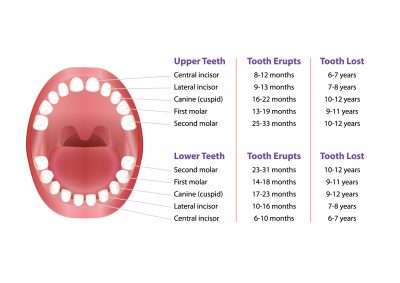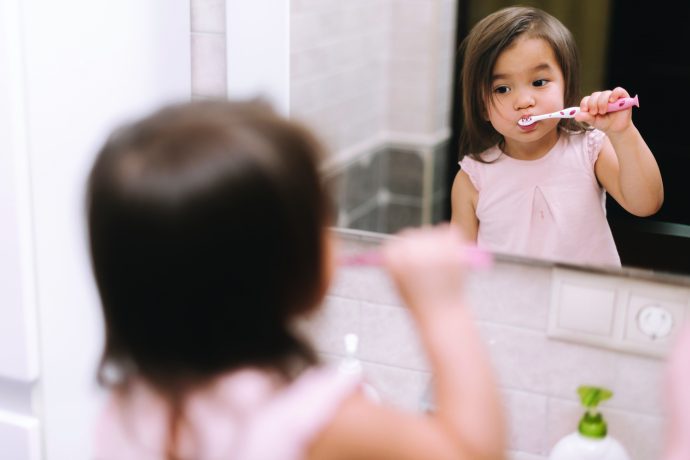Some parents may think that since baby teeth are not permanent, they don’t have to prioritise their young child’s dental health. This is actually a grave misconception.
Growth of baby and permanent teeth is a crucial part of child development. Apart from other developmental milestones, parents should also monitor and be aware of their child’s dental development during the early years.
Dental 101
First of all, it is good to learn about the types of teeth, both baby teeth and permanent teeth.
- Incisors: The front teeth with a thin cutting edge composed of central and lateral incisors that function to bite and cut food. There are 8 incisors in both baby and permanent teeth.
- Canines: The pointy teeth located next to the incisors and used to tear food. There are 4 canines in both baby and permanent teeth.
- Molars and premolars: Teeth with broad, flat surfaces located to the side and back of the mouth that crush and grind food. There are 8 molars in baby teeth and 12 molars in permanent teeth. The 8 premolars are smaller than molars and present in permanent teeth only.

Teething is the process of baby teeth erupting or breaking through the gum. Typically, the first teeth to erupt are the 2 central incisors on the lower jaw at around the age of 6 months. This is followed by the 2 central upper incisors, upper and lower lateral incisors, the 4 first molars, the 4 canines and finally, the 4 second molars. Usually, 1 tooth will erupt per 1-2 months once teething starts.
The timing of eruption may vary among children, while the sequence tends to be more consistent. In general, a child should have a complete set of 20 baby teeth by the age of 2-3 years. Do note that it is normal to have some spacing between the upper front teeth and no treatment is required. This is a natural growth process to provide the necessary space for the larger permanent teeth.
Dealing with teething
Teething may feel uncomfortable to children. Here are some ways to provide relief:
- Massage the gum with a clean, soft, wet cloth
- Chilled teething rings
- Unsweetened teething rusks
- Pain-relief medications
Permanent teeth of a child will begin to emerge between the ages of 6-7 years. Typically, the first permanent teeth to erupt are the first molars, which may emerge behind the baby molars. Next, the lower permanent incisors may also emerge behind the baby incisors, giving an impression of double layer. This is not a cause for concern since baby teeth will get wobbly and fall out as permanent teeth emerge and move into the correct position. Parents must ensure that the erupting teeth are cleaned as well.
The rest of the permanent teeth will follow and grow into the gaps left by baby teeth that are lost. Between the ages of 6 and 12, children will have a mixture of both baby and permanent teeth in their mouth. By the age of 21 years, a person will have a full set of 32 permanent teeth, including the wisdom teeth (or the third molars).
The importance of caring for baby teeth
Baby teeth are not permanent, but they are a crucial part of your child’s dental development. Baby teeth reserve and create space for permanent teeth to grow into. They also play a role in the normal development of speech and facial structure. Healthy baby teeth also help in attaining good nutrition and giving a good start to the permanent teeth, as decay or infection in baby teeth can affect food consumption and dental development.
Hence, taking care of dental health should start from an early age. Parents should teach their child to brush their teeth with fluoridated toothpaste as soon as the first baby tooth appears. You can take your child to their first dental visit when the first tooth emerges or latest by the age of 12 months. Starting early is the best way to establish good dental care in your child.






Comments